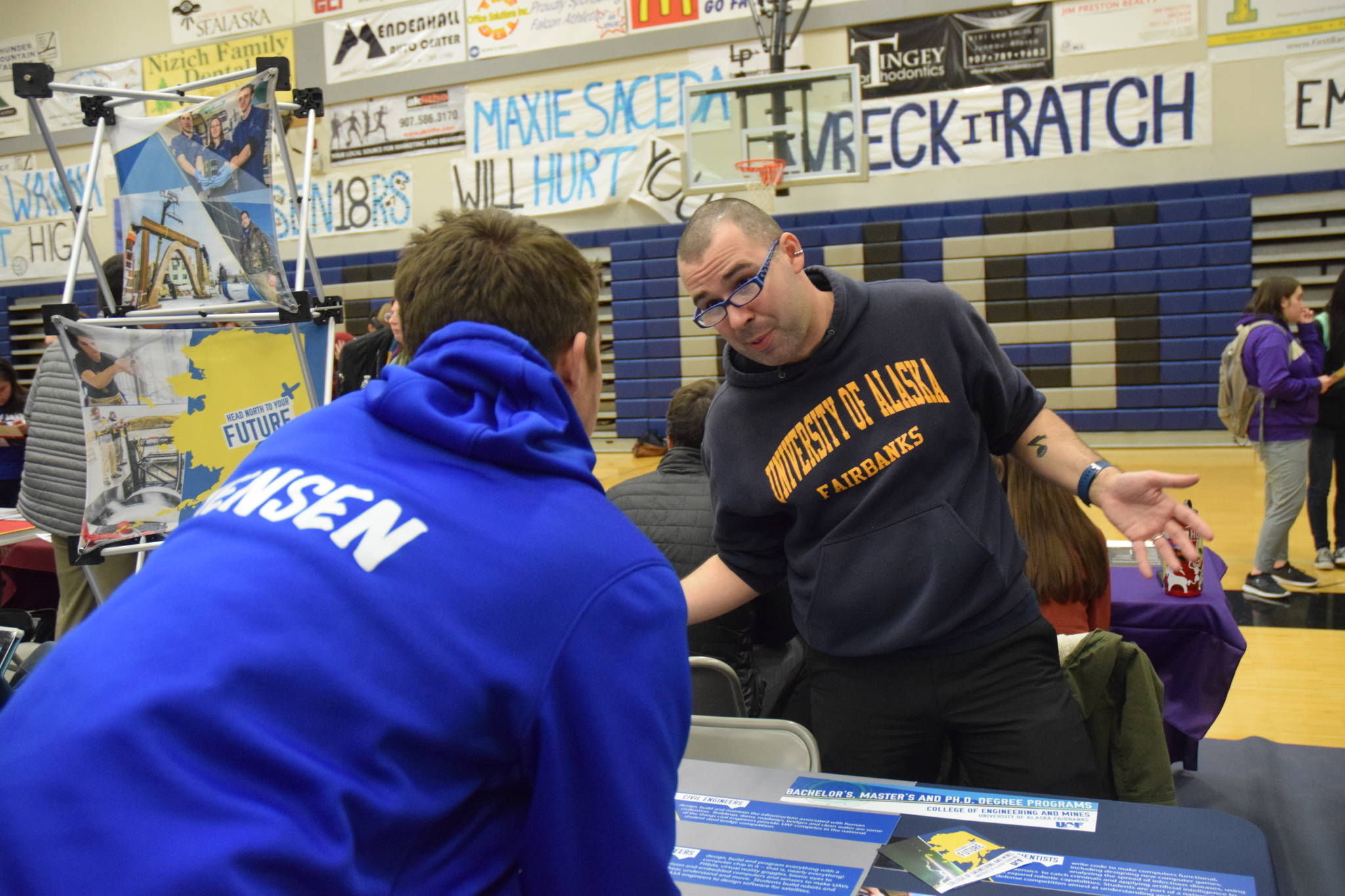Cole Jensen has some time to decide what he wants to do after high school. He’s only a sophomore. Even so, he’s getting a jump on his research, bouncing from booth to booth at Friday’s college and career fair at Thunder Mountain High School.
Jensen plans on going into engineering after high school. Maybe civil engineering or geographic engineering, a new field he learned about while talking to a University of Alaska Fairbanks representative.
The sky-high cost of school and the strength of the engineering program are high factors in his decision-making process.
“Then there’s faculty-to-student ratio. Smaller classrooms — 20, 30, I guess 50ish would be good for me — versus going to a massive school like UW (University of Washington),” Jensen said. “I knew there were tons of schools out there, but I didn’t know there was this many.”
Start an apprenticeship in the trades, attend a liberal arts college or a big state school. Maybe sign up for military service (but which branch?): these are some big decisions for a 16-, 17- or 18-year-old.
But students don’t know what’s available unless they consider it, TMHS counselorTerri Calvin said. The college and career fair is Calvin’s “midterm.” She coordinates with around 75 colleges, trade unions, military branches and technical schools.
They each get a folding table in the TMHS gymnasium, which they populate with program literature, buttons, stickers, bookmarks and the odd Plinko board to try and pull in prospective students.
Calvin said that, like Jensen, many students worry about paying for school. But many also aren’t aware of the financial aid they qualify for. Some make the mistake of writing college off as financially unattainable.
“You don’t know until you try. And you don’t know if you can afford it until you do all the paperwork,” Calvin said.
TMHS used to have just a college fair. Now it’s a college and career fair. Many of the armed forces have booths, as well as about a dozen technical schools and trade unions.
“We’re able to incorporate more of the unions, the military, vocational — so there’s a little bit more for kids to kind of go, ‘Oh, yeah, college isn’t my thing but I still have choices,’” Calvin said. “Just because I’m not going to a four-year institute doesn’t mean that I can’t move forward.”
Kirk Perisich, a representative for the Pacific Northwest Regional Council of Carpenters, said he’s here to dispell myths about union careers. Many students think union apprenticeships have very high hurdles.
Perisich said that’s a misconception. When asked what requirements the union has for high school grads, Perisich pinched his thumb and forefinger together to make a zero. His other selling point? A mock up of a paycheck for two 40-hour work weeks.
It totals more than $1,500. And that’s the starting pay.
“They need to have a high school diploma or a GED and be able to obtain a driver’s license by the time they graduate,” Perisich said. “Right out of the gate, these kids would be making $23 an hour. And that’s not including their benefits, again. That’s their hourly rate.”
Five years ago, Pacific Lutheran University representative Hannah Middlebrook met TMHS student Alan Young at the college and career fair. Young is now a teacher at TMHS.
“These brief, 30-second, minute conversations with students in a high school gymnasium really matter. It’s changing the course of their life and that’s pretty powerful,” Middlebrook said.


